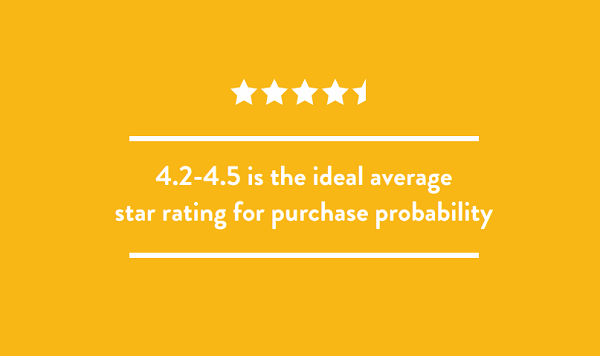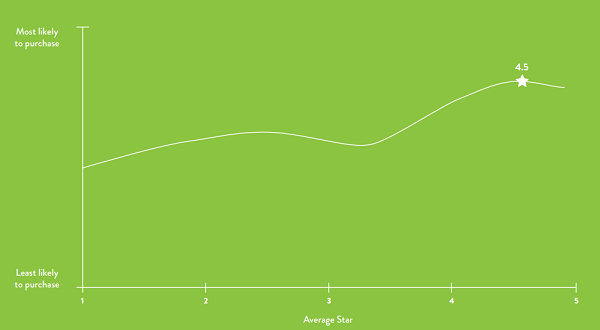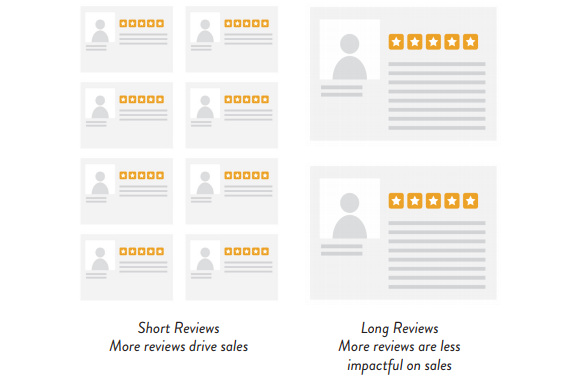
22 February 2018 | 3 Minute(s) to read
Star ratings and reviews influence purchases. Fact. They play a big role in the consumer’s decision-making process and they certainly affect the willingness to buy. But… What is considered a decent rating? Is it good to have hundreds of reviews? What is the relationship between average rating and purchase probability?

PowerReviews’ study “The Proven Power of Reviews” (2014) found that the presence of ratings and reviews is one of the top factors impacting purchase decisions - second only to price. In 2017 the same organisation partnered with Northwestern University’s Spiegel Digital and Database Research Center trying to answer the question “How do reviews influence purchase?” and these are their findings:
Perfect is Too Good to be True ★★★★★
Although we all tend to think that a 5-star review will drive in more enquiries and sales, the study data shows that the relationship between the average star rating of a product and its sales is not linear. Basically, the likelihood of a product being purchased doesn’t necessarily increase as its star rating increases.
They found a customer is more likely to purchase a product with a 4-star rating than one with 3-stars. Purchase likelihood then peaks when the average star rating is between 4.2 and 4.5 stars and starts to drop as the star rating approaches a perfect 5.

Negative Reviews Establish Trust
Yes, believe it or not, negative reviews have a positive impact: they help establish trust and authenticity. The Northwestern Research Team suggest consumers perceive ratings closer to a perfect 5.0 as “too good to be true”.

Reviews Matter for High Priced Items
The study shows that star ratings have a stronger influence on expensive items compared to lower priced items within the same category. For example, a lower priced hair conditioner with a low average star rating will still be purchased. However, a low rated but expensive hair conditioning product won’t.
What is the Ideal Number of Reviews?
The research reveals that the ideal number of reviews depends on the length of the reviews themselves. When reviews are shorter, more reviews matter. When reviews are longer, however, the number of reviews has a less significant impact.

In Short...
1. Embrace Negative Reviews
While you certainly don’t want to aim for negative reviews, allowing them on your site brings authenticity and helps build trust with shoppers, especially because the vast majority of consumers are actively seeking out negative reviews.
2. Prioritize Higher Priced Items
Because there’s a higher risk involved with purchasing a higher priced item, reviews can help consumers overcome this risk. Make reviews for more expensive items a higher priority.
3. Generate More Reviews
The number of reviews for a product can have an impact on sales, especially if those reviews are short. It’s important that you make the process of leaving a review as simple as possible to generate the most feedback.

